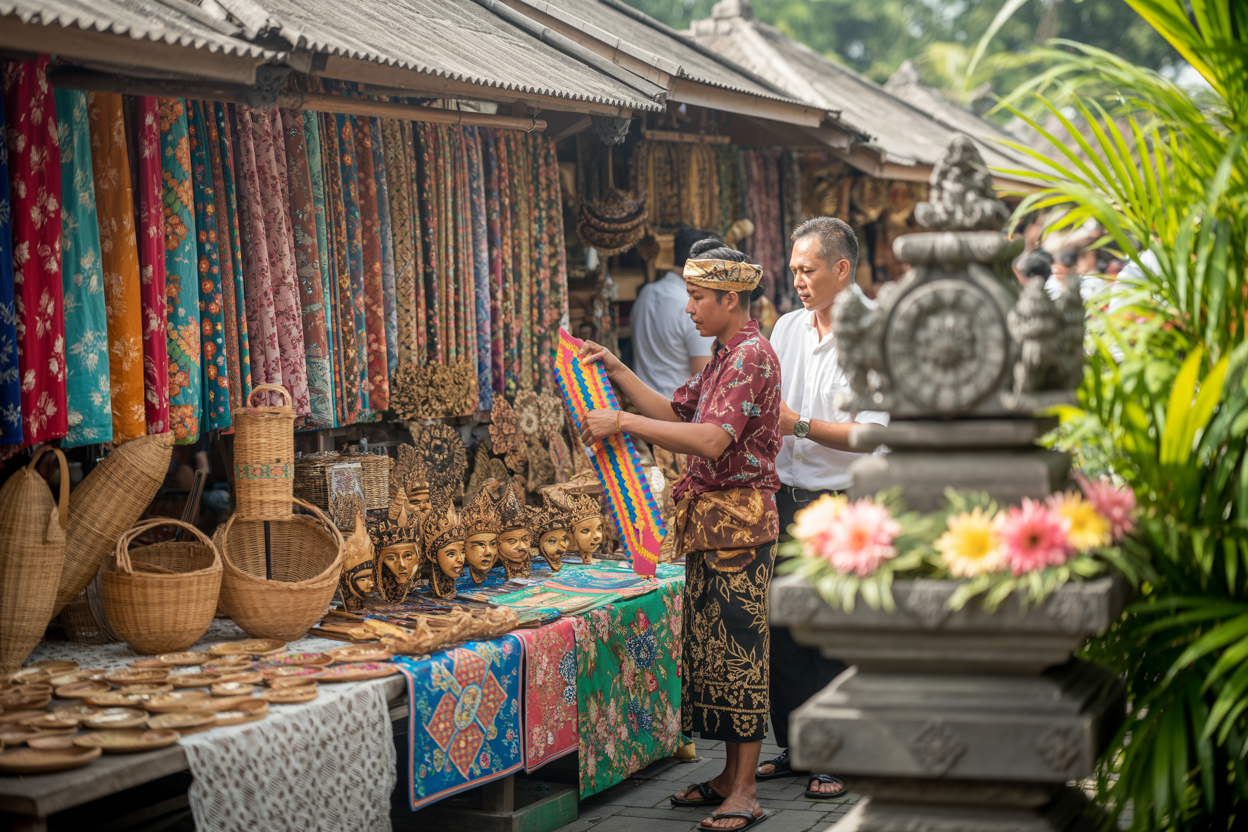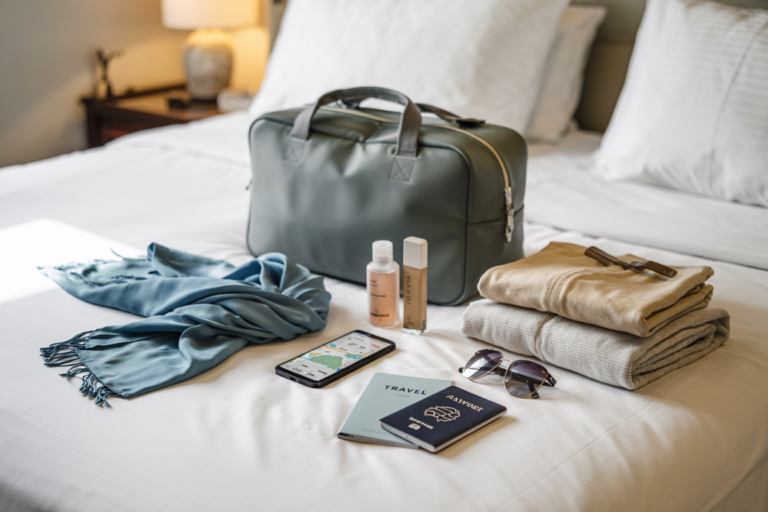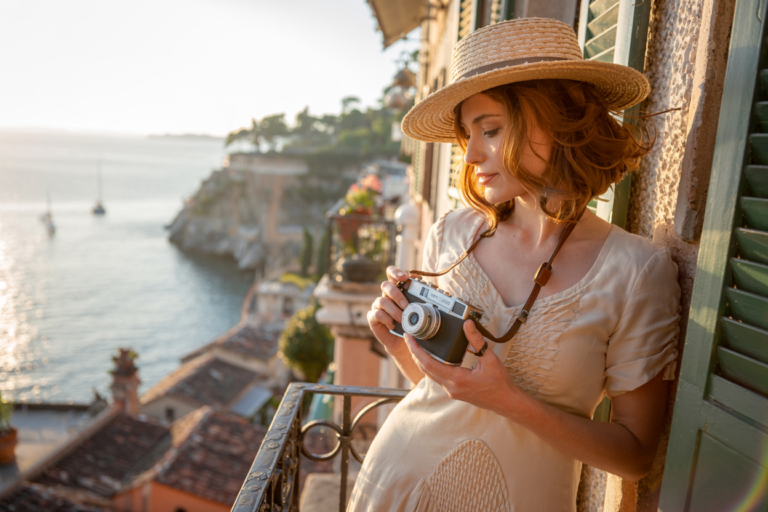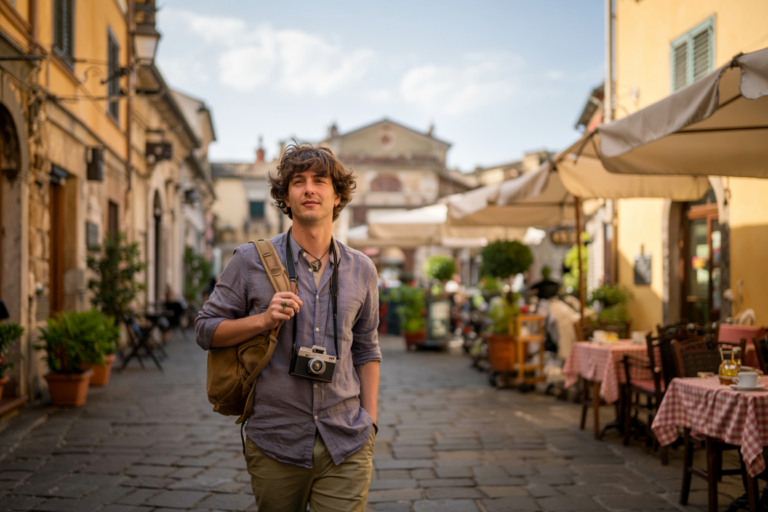Tucked away in the cultural heart of Bali, Indonesia, the Ubud Art Market or Pasar Seni Ubud is a kaleidoscope of creativity.
From handcrafted batik clothing and woven baskets to wooden carvings and silk scarves, this vibrant market offers an authentic Balinese experience and some of the best shopping on the island.
If you’re planning a visit to Ubud, this complete guide to the Ubud Art Market will help you navigate the bustling alleys, uncover the best treasures, avoid tourist traps, and shop like a pro.
1. Introduction to the Ubud Art Market
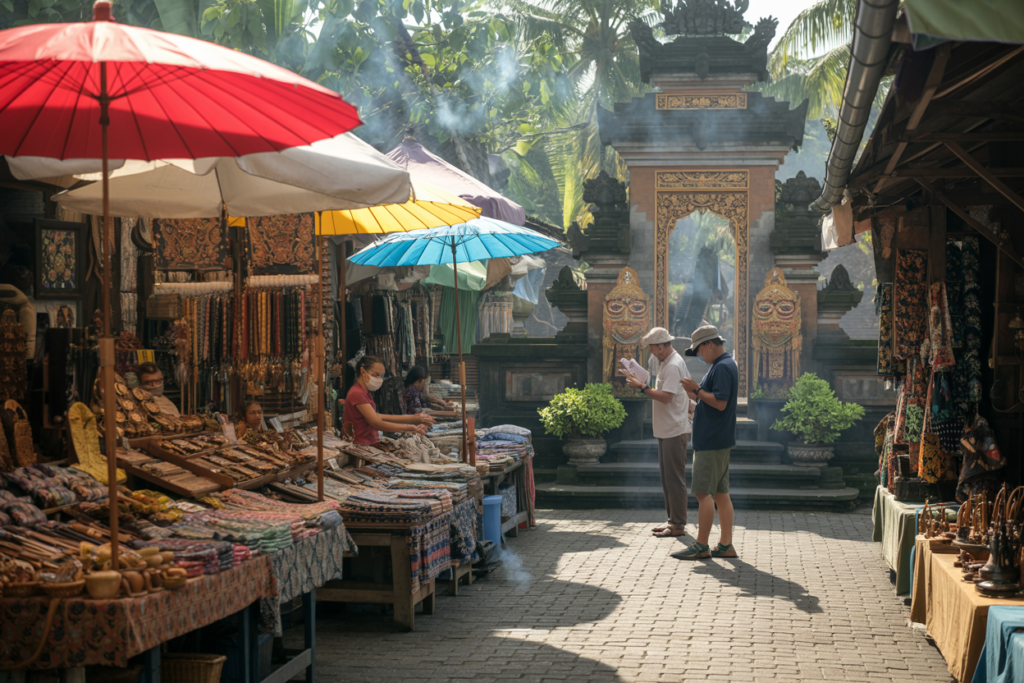
The Ubud Art Market is the soul of Bali’s artistic spirit.
Known locally as Pasar Seni Ubud, this open-air market is where locals, artists, and travelers collide in a beautiful, chaotic swirl of color and culture.
Unlike Bali’s touristy malls or cookie-cutter souvenir shops, this market showcases handmade, locally sourced crafts by Balinese artisans.
Every product you see tells a story of heritage, craftsmanship, and community.
Whether you’re a serious collector, casual souvenir shopper, or cultural explorer, the Ubud Art Market will leave you inspired—and probably with your bags a little heavier.
2. Where is the Ubud Art Market Located
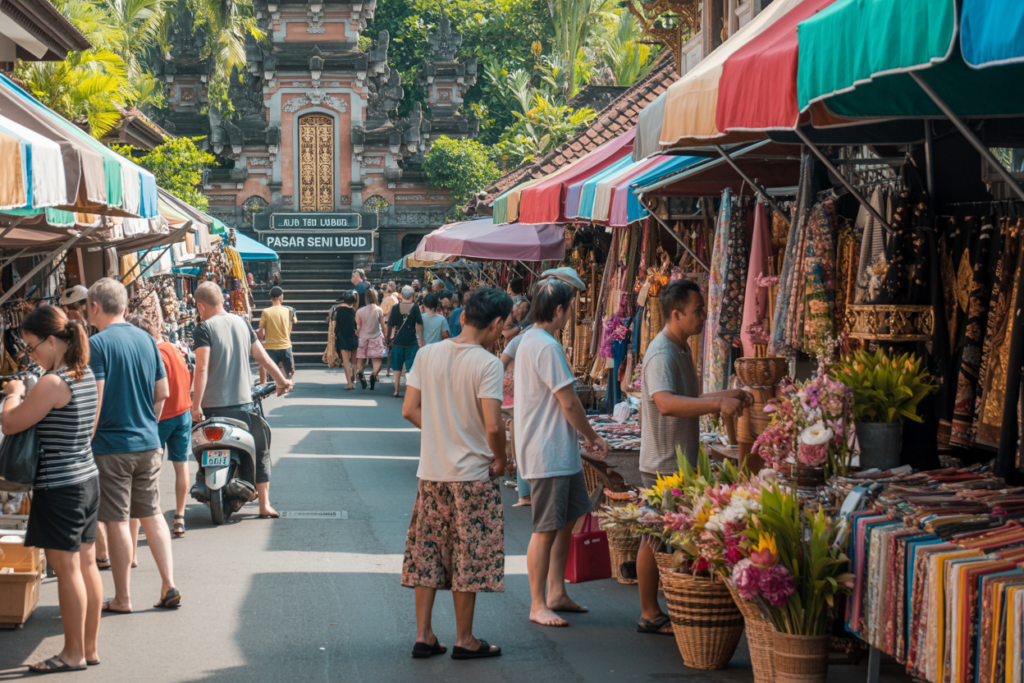
📍Location: Jalan Raya Ubud, across from the Royal Palace (Puri Saren Agung)
The market is located in the heart of Ubud, one of Bali’s most popular destinations.
It spans several streets, but the main concentration lies directly across from the Ubud Royal Palace, making it easy to find.
If you’re exploring Ubud on foot, the market is likely to be part of your walking route.
For those on scooters, there are nearby parking lots along Jalan Monkey Forest and Jalan Suweta.
3. When is the Best Time to Visit
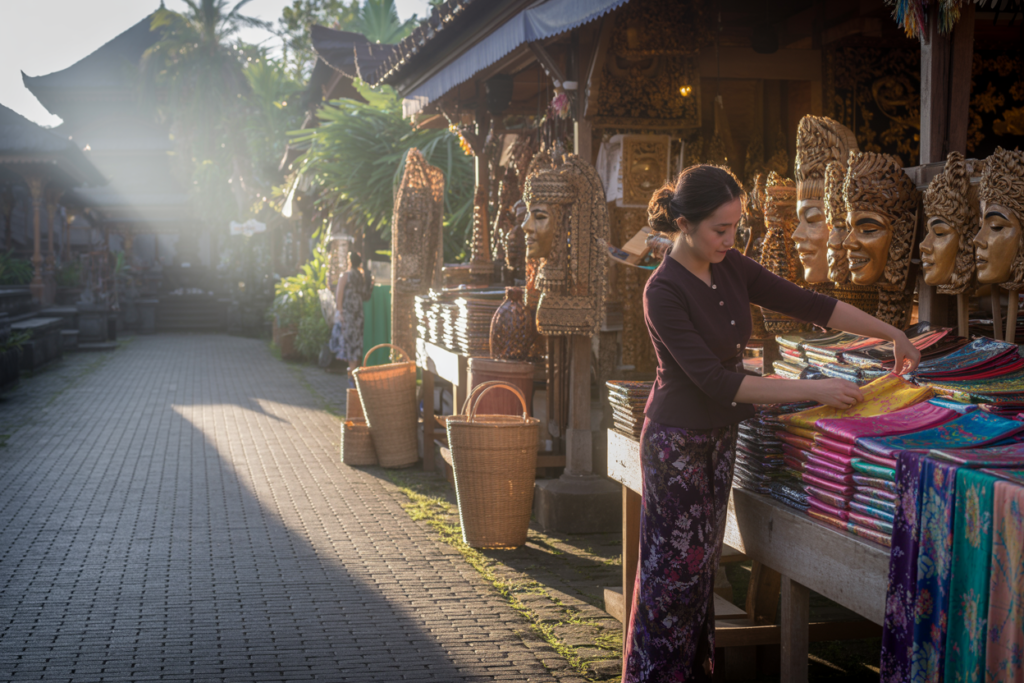
Opening Hours:
- Daily from 6 AM to 6 PM
- Early morning (6–9 AM): Fresh produce and fewer tourists
- Late morning to afternoon: Bustling, more crowded, better for art shopping
Pro Tip:
✅ Visit between 8 AM and 10 AM to get the “morning price” (harga pagi)—vendors believe their first sale brings good luck, and you’re more likely to get a better deal.
4. What to Expect at the Ubud Art Market
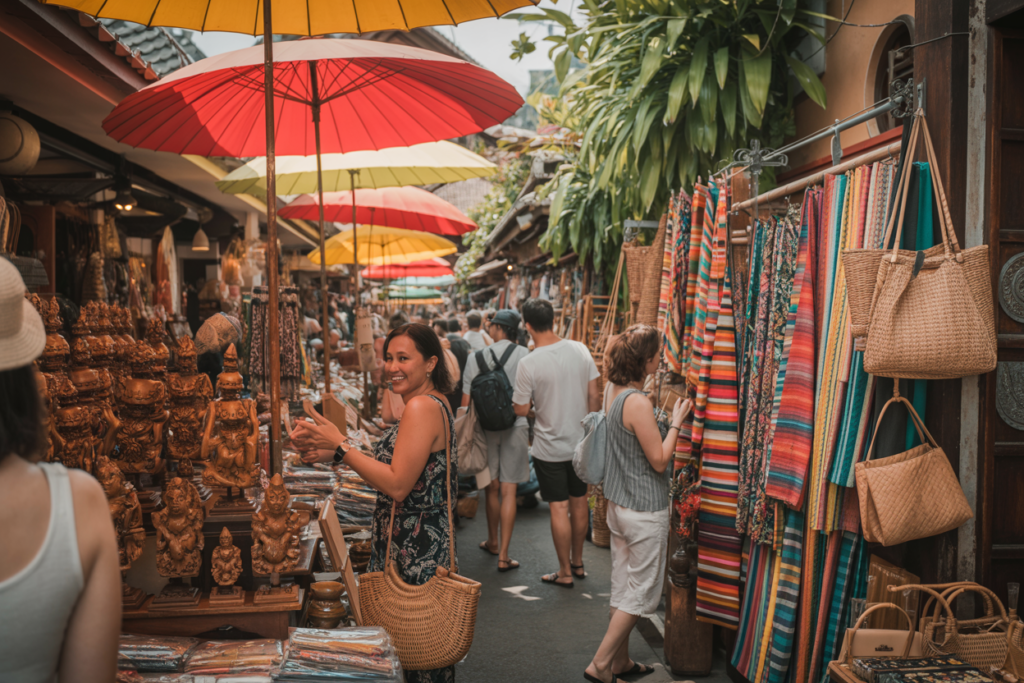
The Ubud Art Market isn’t just one stall—it’s a maze of dozens of vendors, packed with:
- Handmade textile
- Bamboo bags & baskets
- Wood carvings
- Rattan furniture & home decor
- Paintings
- Traditional Balinese masks
- Jewelry and accessories
Expect a vibrant, sensory experience colorful stalls, the scent of incense, bargaining in multiple languages, and the soft sounds of gamelan music in the background.
5. Must-Buy Items at the Market
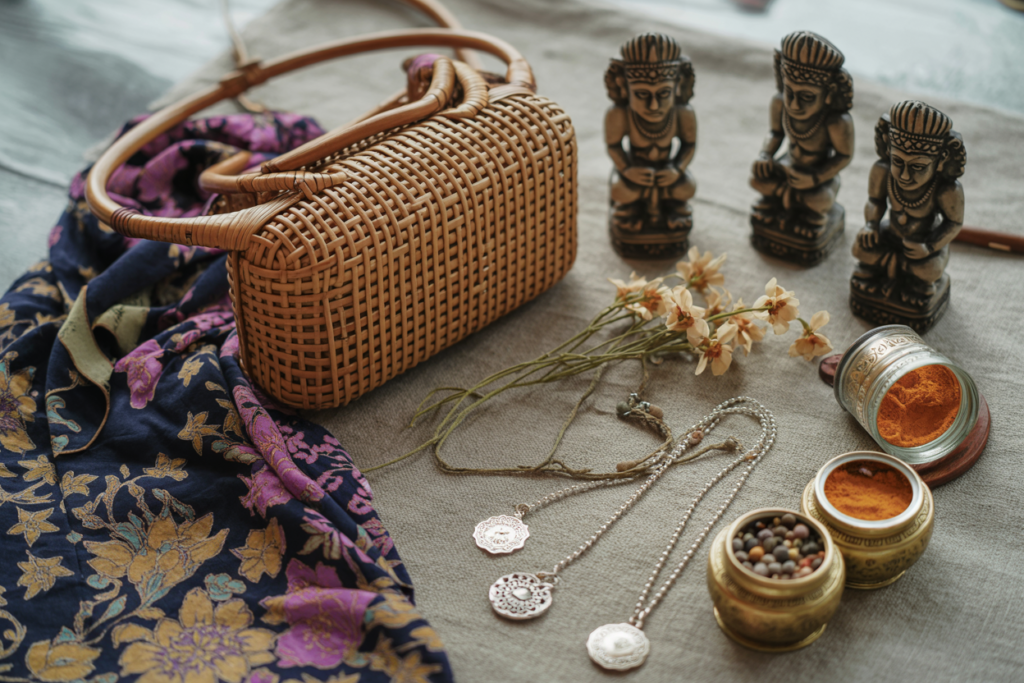
Here are the top items to buy at the Ubud Art Market:
1. Rattan Bags
These stylish, circular or box-shaped bags are a Bali staple and come in dozens of designs.
2. Balinese Sarongs
Brightly colored with hand-dyed batik patterns, sarongs are lightweight and make beautiful souvenirs.
3. Wooden Carvings
From intricate Buddha statues to animal figures, these are hand-carved and often customizable.
4. Hand-Painted Artwork
Local painters offer original works ideal for wall art and collectors.
5. Dreamcatchers & Wall Hangings
Perfect for creating a boho aesthetic at home.
6. Handmade Jewelry
Silver, beads, shells everything from chunky necklaces to dainty rings.
7. Spices and Local Teas
Take home a piece of Bali’s rich culinary culture.
6. How to Bargain Like a Local
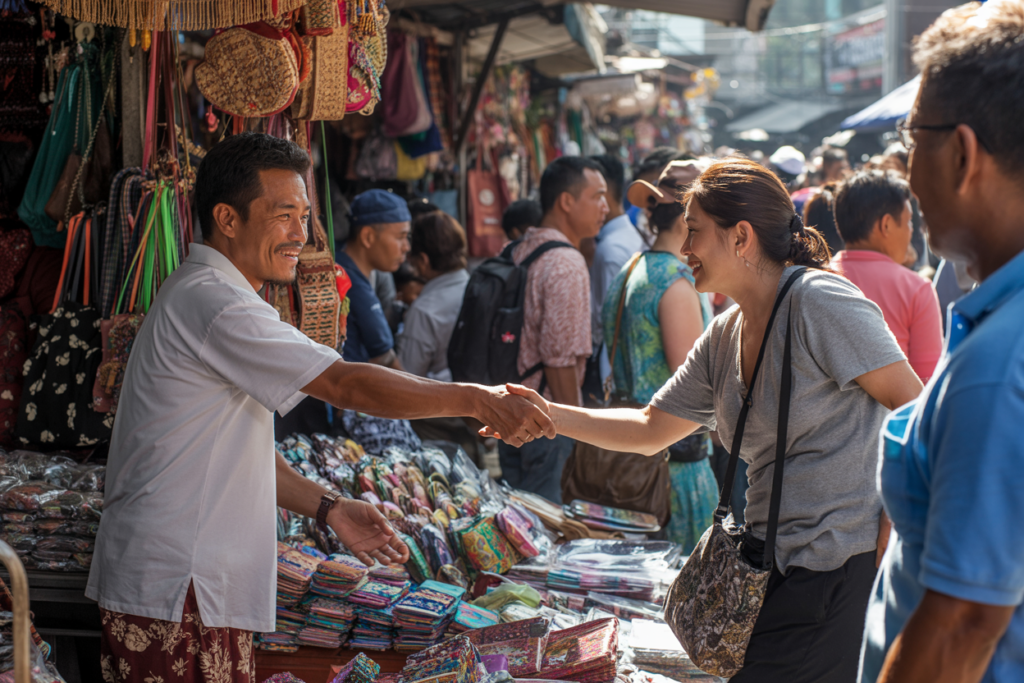
Bargaining is part of the experience! Here’s how to do it respectfully:
- Start by offering 40-50% of the quoted price.
- Be polite and smile never aggressive.
- Don’t show too much enthusiasm.
- Buying in bulk? Ask for a quantity discount.
- If the price feels unfair, walk away often, the seller will call you back with a better offer.
Bargaining Phrases in Bahasa Indonesia:
- “Berapa harganya?” = How much is it?
- “Bisa kurang?” = Can it be cheaper?
- “Mahal sekali!” = Too expensive!
7. Best Stalls & What They Sell
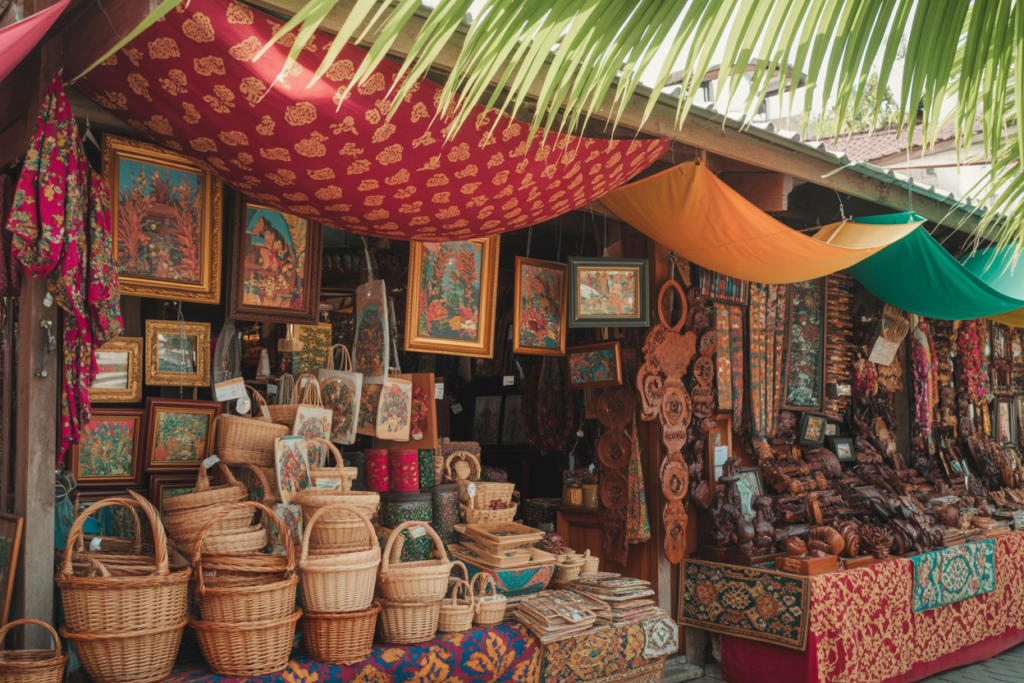
While stalls frequently change hands, here are some areas worth exploring:
North End
- High-quality art, paintings, and wall hangings
- Slightly more expensive, but great craftsmanship
Middle Section
- Woven bags, dreamcatchers, batik fabric, and sarongs
- Plenty of bargaining room
Southern Alleyways
- Carvings, masks, incense holders, and woodcraft
- Great for unique gifts and interior decor
8. Tips for Ethical Shopping in Ubud
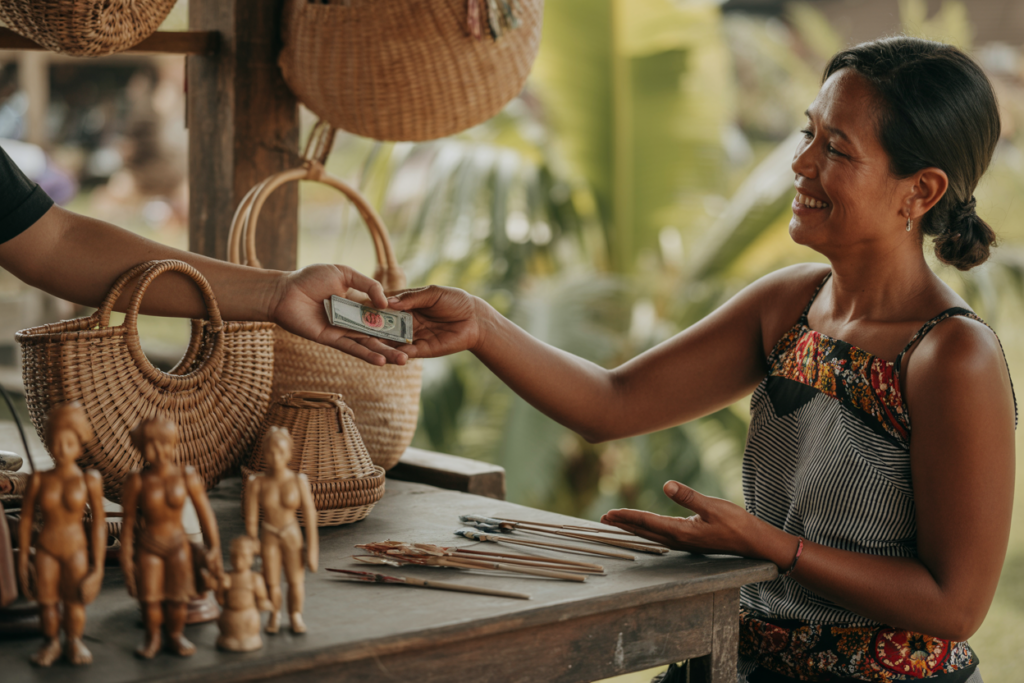
✅ Support local artisans—avoid imported knockoffs.
✅ Ask about the origins of items. Many stall owners work with rural artists.
✅ Don’t aggressively haggle on very cheap items—be fair and respectful.
✅ Prefer handmade and sustainable materials.
9. Food & Coffee Spots Near the Market
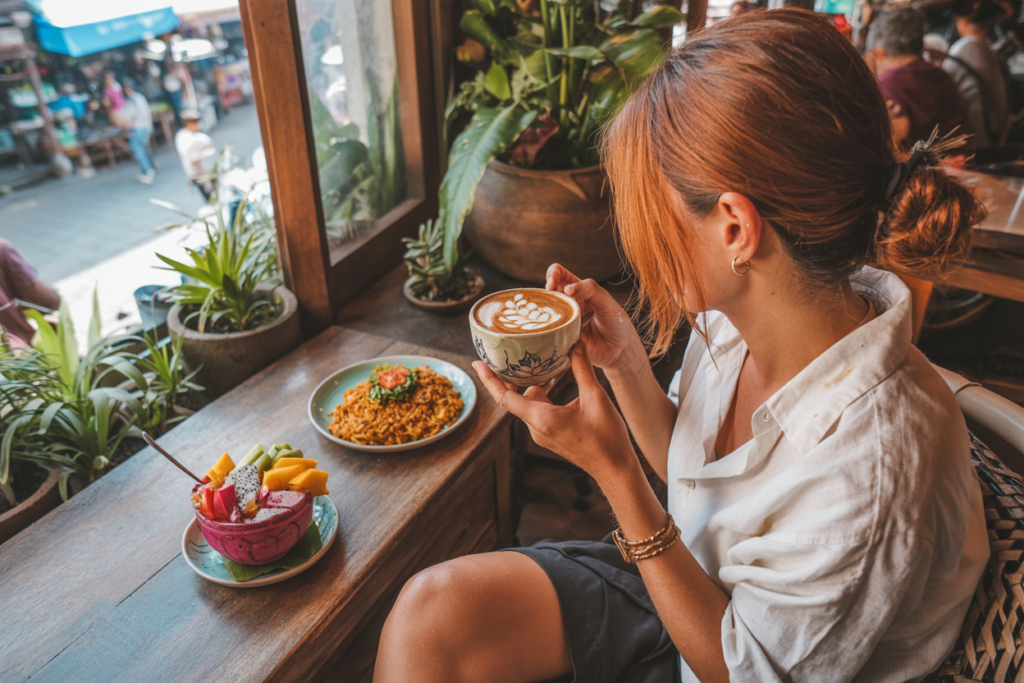
You’ll likely need a break from the market madness. Here are great places to recharge nearby:
Seniman Coffee Studio
A hip, modern café with single-origin Balinese coffee and good Wi-Fi.
Melting Wok Warung
A popular spot for traditional Indonesian food at fair prices.
Clear Café
Trendy, healthy meals and juices in a peaceful setting just a short walk away.
Ubudian Café
Lovely upstairs terrace, great for people-watching over the market.
10. Spending Tips: How Much to Budget
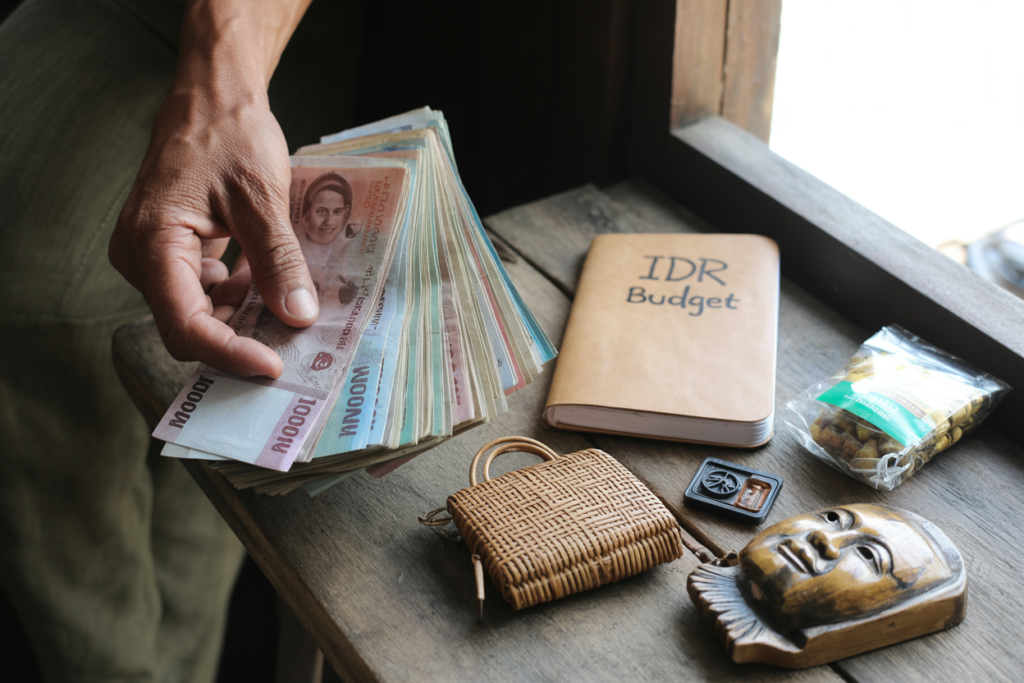
Here’s a rough idea of prices and what to expect:
| Item | Price Range (IDR) | Price in USD (approx) |
|---|---|---|
| Rattan Bag | 100,000 – 250,000 | $7 – $17 |
| Sarong | 50,000 – 150,000 | $3.50 – $10 |
| Wooden Carvings | 150,000 – 500,000 | $10 – $35 |
| Small Paintings | 100,000 – 300,000 | $7 – $21 |
| Jewelry | 30,000 – 200,000 | $2 – $14 |
| Fridge Magnets & Trinkets | 10,000 – 30,000 | < $2 |
✅ Daily Shopping Budget:
Budget travelers: $20–$30
Mid-range: $40–$70
Big spenders/collectors: $100+
11. How to Get There & Parking
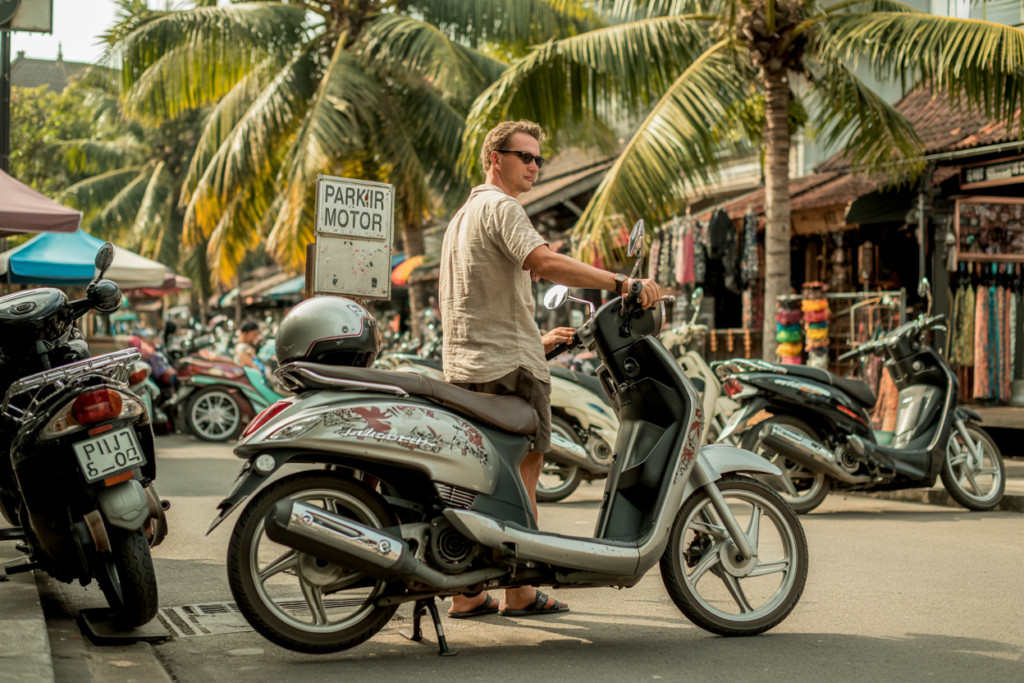
Getting There:
- From Ubud center: Walk, cycle, or scooter
- From Seminyak/Canggu: 1.5–2 hour drive
- Taxis and ride apps like Grab or Gojek are available
Parking Tips:
- Car parking is limited—scooters are easier
- Paid lots are available along Jalan Monkey Forest
12. Best Time to Avoid the Crowds

To beat the tourist rush:
✅ Visit before 10 AM
✅ Avoid weekends and national holidays
✅ Rainy season (Nov–March): Fewer crowds, better deals
13. Safety & Scams: What to Watch Out For
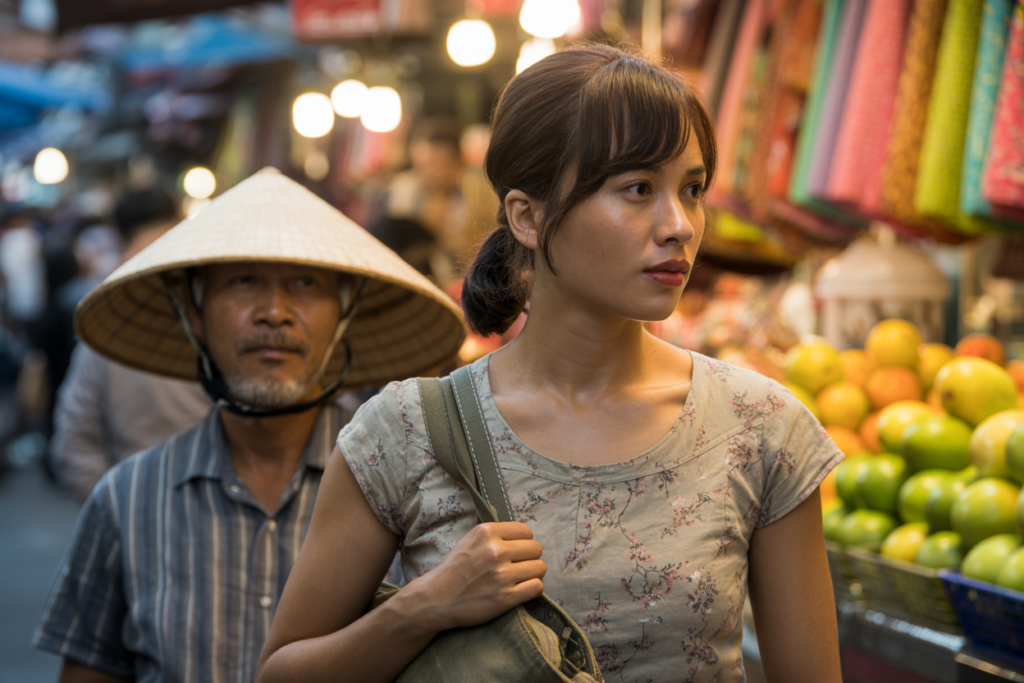
Ubud is generally safe, but stay sharp:
Common Scams:
- Vendors quoting 4x the real price
- “Limited-time only” sales
- Fake “antiques”
✅ Safety Tips:
- Watch your bags and phones
- Use cash, preferably in small denominations
- Stay hydrated and wear sunscreen—it gets hot!
14. Sustainable Shopping Tips
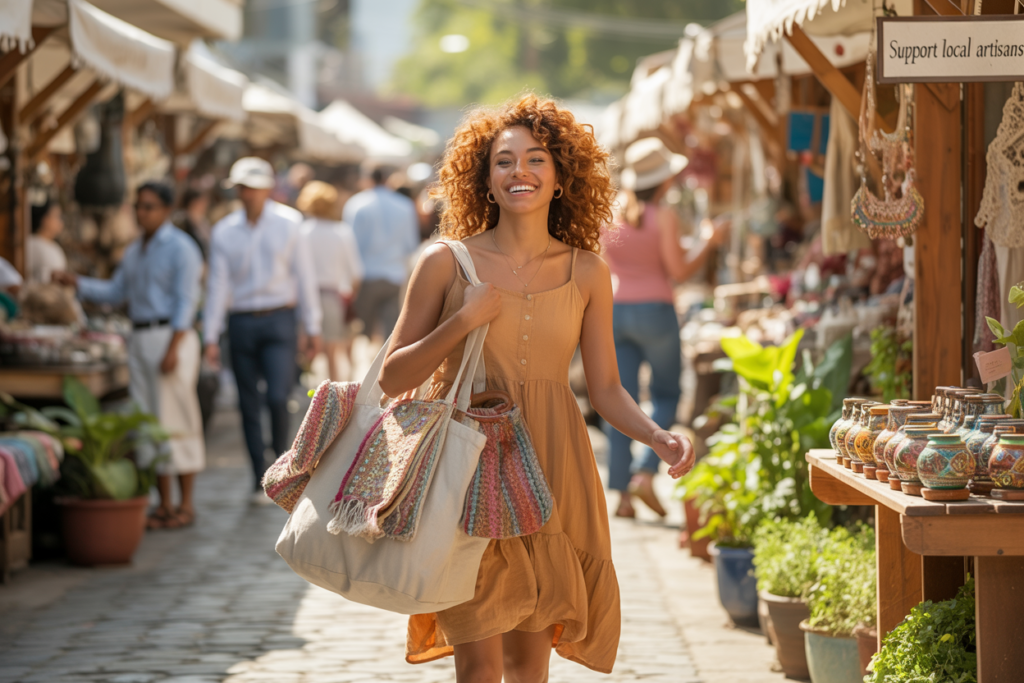
Help keep Bali beautiful by shopping smart:
Bring your own tote or reusable bag
Opt for natural materials like bamboo and cotton
Support vendors who minimize plastic
Choose long-lasting, functional items over throwaways
15. Final Travel Tips for Visiting
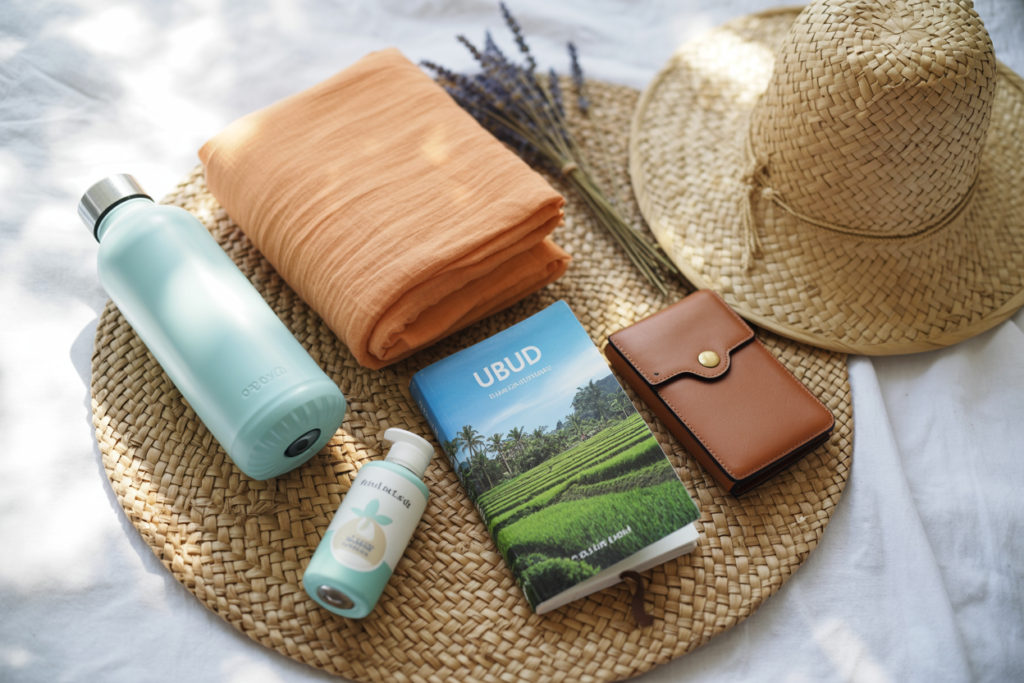
Plan a half day or full day for market exploring
Wear comfortable shoes for walking
Ask before taking photos of vendors or their stalls
Bring hand sanitizer it’s a busy area
Carry a reusable water bottle
16. Frequently Asked Questions (FAQs)
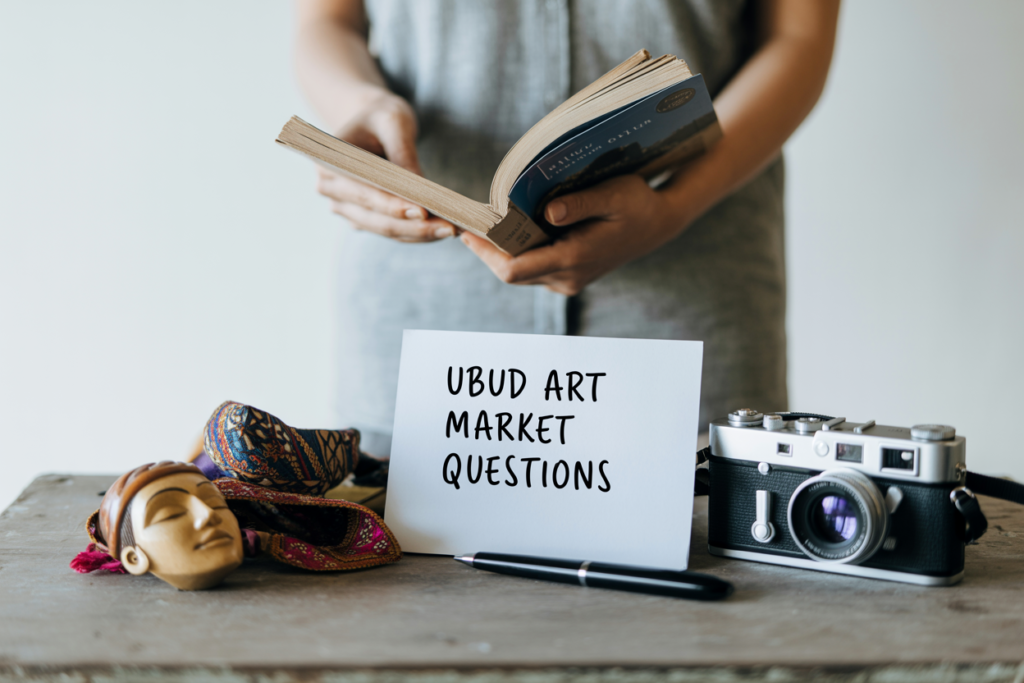
Q: Is the Ubud Art Market open every day?
Yes! It operates daily from early morning to evening.
Q: Is it better than markets in Seminyak or Kuta?
Ubud is generally more authentic and artisanal.
Q: Can I use credit cards?
Most stalls are cash-only. Bring enough rupiah or use the nearby ATMs.
Q: Is everything handmade?
Not everything. Always ask! Many vendors collaborate with artists from surrounding villages.
17. Conclusion
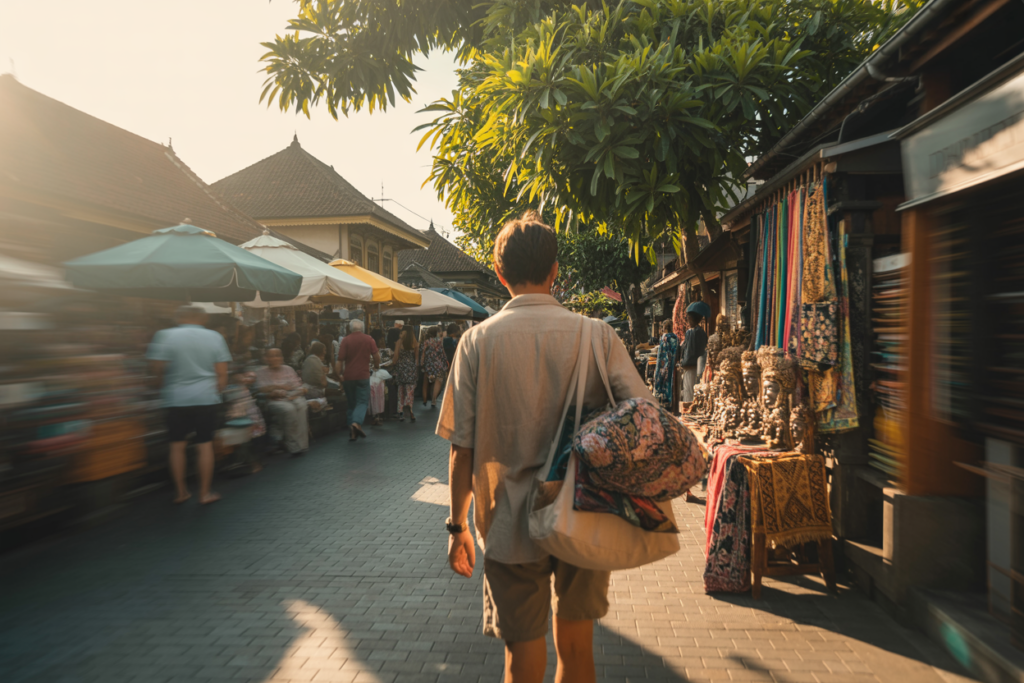
The Ubud Art Market is more than just a place to shop it’s a celebration of Balinese artistry, community, and vibrant cultural exchange.
Whether you’re decorating your home, grabbing souvenirs, or just browsing the rich craftsmanship, this market has something for everyone.
✅ Take your time.
✅ Talk to the artisans.
✅ Soak in the creativity.
✅ And above all have fun bargaining!
So, when you’re in Ubud next, don’t just pass through. Immerse yourself in the market.
It might just be the highlight of your Bali adventure.

